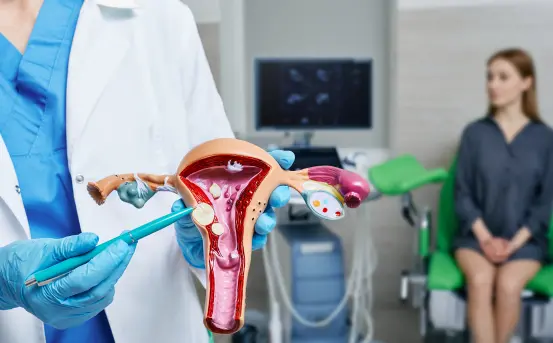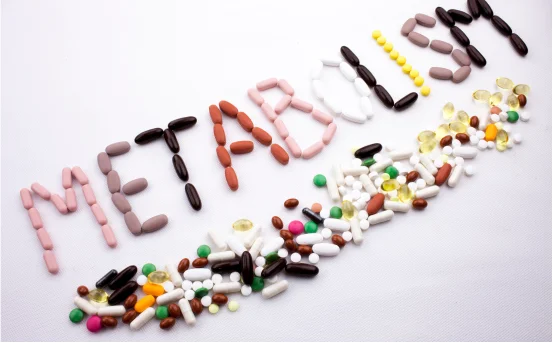Introduction
Dilation and Curettage (D&C) is a safe and commonly performed gynecological procedure. Though it may sound intimidating, this simple surgical method offers several medical and diagnostic benefits, especially for women experiencing abnormal uterine bleeding, miscarriage complications, or endometrial issues. One of the key points to consider are the benefits of dilation and curettage surgery.
What is Dilation and Curettage (D&C)?
Dilation and Curettage (D&C) is a minor surgical procedure where:
- Dilation: The cervix is gently opened.
- Curettage: Tissue from the inner lining of the uterus (endometrium) is scraped or suctioned out using a special instrument called a curette.
It can be done for diagnostic (investigative) or therapeutic (treatment) purposes.
Who Needs D&C Surgery?
D&C is often recommended for women dealing with:
- Heavy or irregular menstrual bleeding
- Tissue remaining in the uterus after a miscarriage or delivery
- Uterine polyps or fibroids
- Suspected uterine or endometrial cancer
- Postmenopausal bleeding
Benefits of Dilation and Curettage Surgery
- Accurate Diagnosis of Uterine Conditions
One of the most valuable benefits of D&C is that it helps doctors obtain tissue samples from the uterine lining for biopsy. This helps in diagnosing:
- Endometrial hyperplasia
- Uterine cancer
- Polyps or fibroids
- Hormonal imbalances
It provides accurate pathological insights that other imaging techniques may not detect.
- Effective Treatment for Abnormal Uterine Bleeding
If you’re experiencing heavy or irregular bleeding that doesn’t respond to medication, a D&C can remove the excess endometrial lining. This can:
- Reduce or stop heavy bleeding
- Normalize menstrual cycles
- Improve overall comfort and hygiene
It is especially beneficial in perimenopausal women suffering from hormonal fluctuations.
- Clears Retained Tissue After Miscarriage
In cases of incomplete miscarriage, retained tissue can cause infection, pain, and prolonged bleeding. D&C helps:
- Remove remaining pregnancy tissue
- Prevent infection or sepsis
- Allow the uterus to heal
- Shorten the emotional and physical recovery period
This makes D&C a vital part of miscarriage management.
- Speeds Up Recovery After Childbirth Complications
Sometimes after delivery, placental fragments may remain in the uterus. This can cause:
- Persistent bleeding
- Cramping
- Infection risk
D&C efficiently clears the uterus and promotes faster postpartum healing, reducing complications and enabling new mothers to recover safely.
- Removes Uterine Polyps or Small Fibroids
Uterine polyps or fibroids can cause:
- Heavy or painful periods
- Fertility issues
- Pelvic discomfort
D&C allows doctors to remove small growths that interfere with the uterine lining. It is often performed alongside a hysteroscopy for precision.
- Helps Manage Molar Pregnancies
A molar pregnancy is a rare complication where abnormal tissue grows instead of a normal embryo. D&C is the primary treatment to:
- Remove molar tissue
- Prevent cancerous growth (choriocarcinoma)
- Monitor hCG levels post-procedure
This makes D&C a life-saving step in such rare but serious conditions.
- Improves Fertility in Certain Cases
For women struggling with infertility caused by:
- Endometrial polyps
- Hormonal imbalance
- Scar tissue
A D&C procedure may improve chances of implantation by restoring a healthy uterine environment. It is sometimes performed before assisted reproductive treatments like IUI or IVF.
- Provides Symptom Relief with Quick Recovery
Unlike major gynecological surgeries, D&C:
- Is a short 15–30 minute procedure
- Is usually performed under mild anesthesia
- Requires minimal downtime (1–2 days)
- Offers fast symptom relief (especially for bleeding or pain)
This makes it a safe, quick, and outpatient-friendly option.
- Minimally Invasive with Low Risk
D&C is considered minimally invasive compared to other uterine procedures. It offers:
- Small or no visible incisions
- Low complication rates
- High success and satisfaction
When performed by skilled professionals, D&C surgery is very safe, with complications being extremely rare.
- Emotional Closure After Pregnancy Loss
After a miscarriage, the emotional toll can be overwhelming. For many women, D&C provides:
- A sense of physical closure
- Faster healing than waiting for natural tissue expulsion
- Reduced risk of emotional trauma due to prolonged symptoms
Though emotional healing takes time, D&C can help ease the physical burden, aiding overall recovery.
Benefit: Enables Future Planning
One underrated benefit of D&C is that it allows women and their healthcare providers to:
- Understand underlying reproductive issues
- Treat them early
- Plan future pregnancies with confidence
- Prevent future complications
In this way, D&C contributes to long-term reproductive health and planning.
What to Expect After a D&C
Post-procedure recovery is usually smooth. You may experience:
- Light spotting for a few days
- Mild cramping
- Temporary fatigue
Most women return to work and normal activities within 1–3 days. Your doctor will advise when it is safe to resume sexual activity and use tampons.
When to Contact a Doctor
Though complications are rare, seek medical help if you notice:
- Heavy bleeding (soaking a pad in an hour)
- Fever or chills
- Foul-smelling discharge
- Intense abdominal pain
Prompt care ensures a smooth recovery.
Conclusion
Dilation and Curettage (D&C) is more than just a surgical procedure—it’s a gateway to diagnosis, healing, and recovery. Whether you’re facing unexplained bleeding, miscarriage complications, or fertility concerns, D&C can provide relief, answers, and renewed health.
Always consult a qualified gynecologist to understand whether D&C is right for your condition. When performed by experienced hands, the benefits far outweigh the risks, making it a safe and trusted solution in women’s healthcare.























